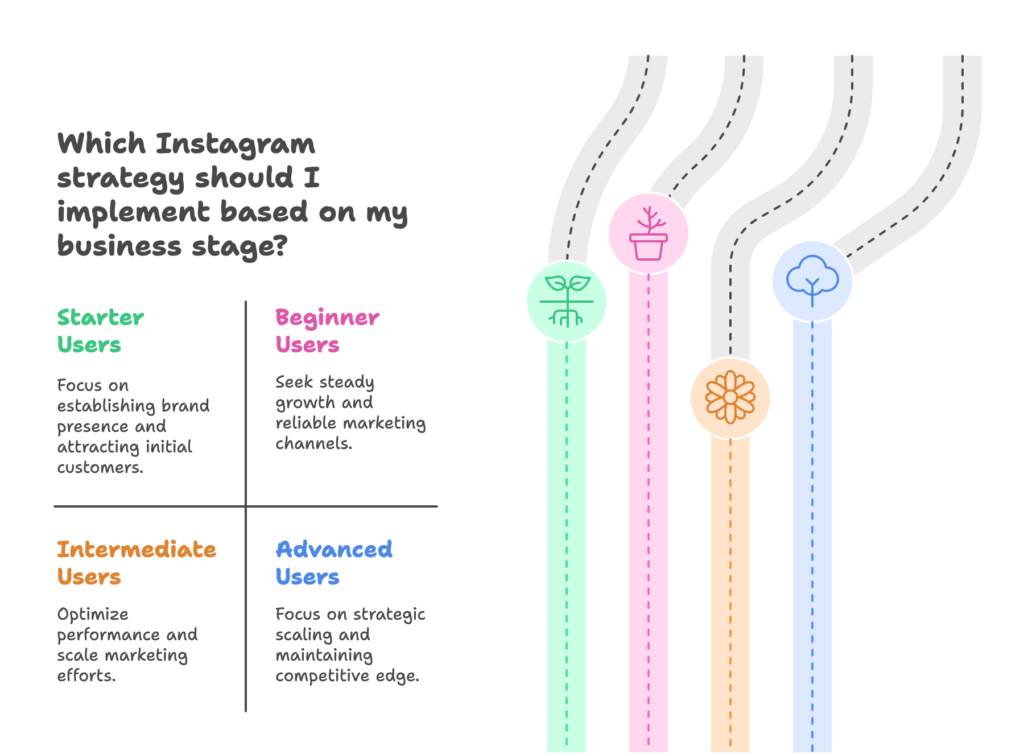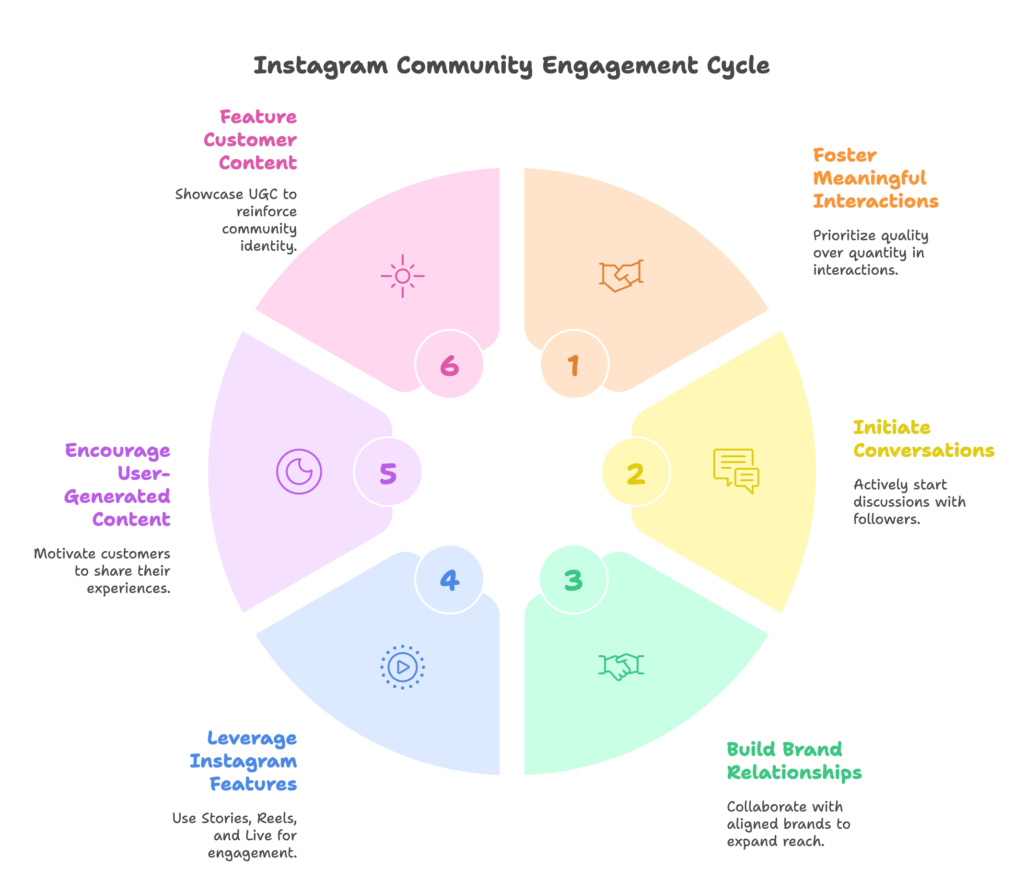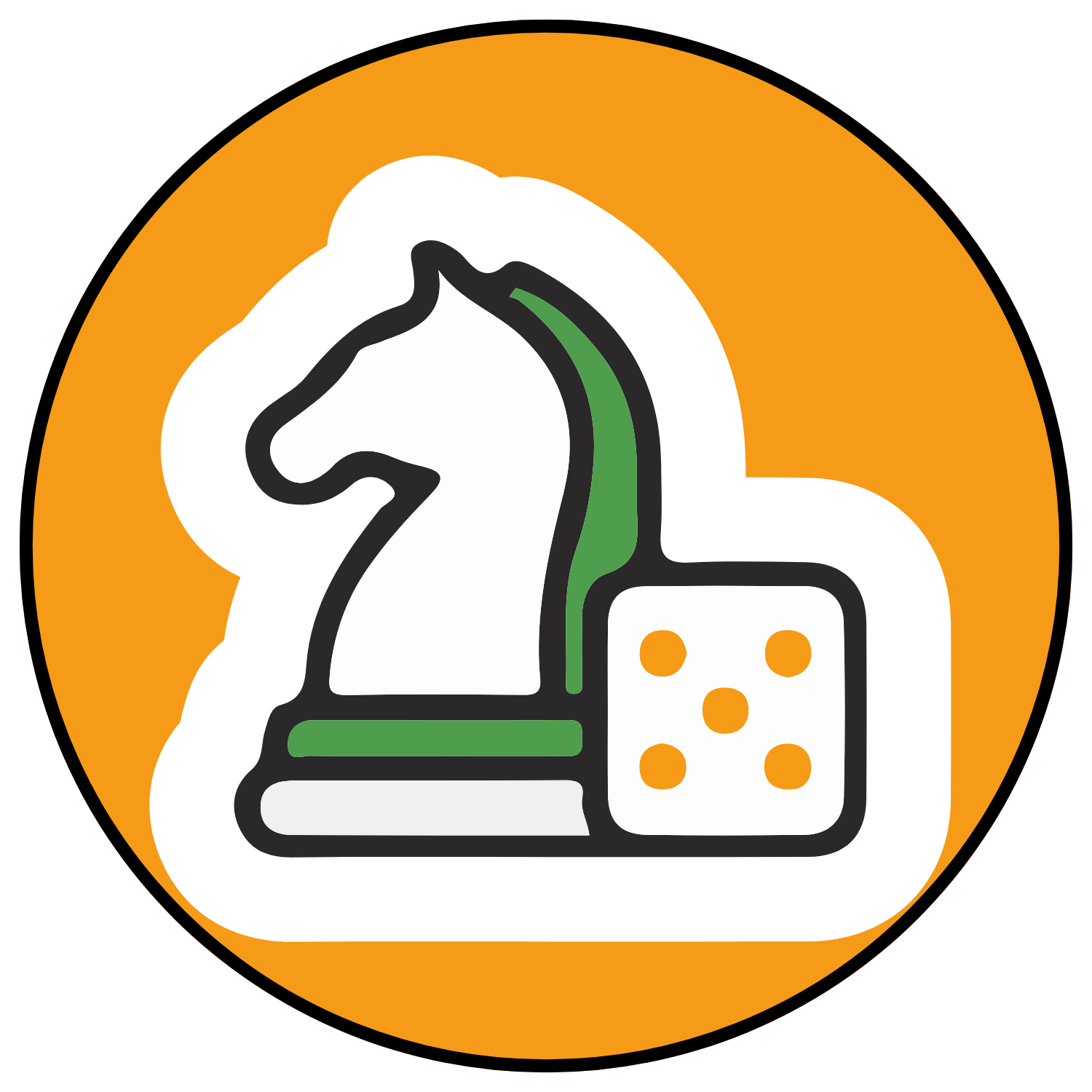The Power of Instagram Communities for Shopify Brands
In the bustling digital marketplace, having a product to sell isn’t enough anymore. What separates thriving Shopify stores from those that merely survive is something far more valuable: community. Instagram has evolved from a simple photo-sharing app into a powerhouse for e-commerce brands looking to connect with their customers in authentic, meaningful ways.
Picture this: a customer discovers your product, falls in love with it, and then discovers they’re not just buying an item – they’re joining a tribe of like-minded people. That’s the magic of building a genuine Instagram community around your Shopify brand. It transforms one-time buyers into passionate advocates who spread your message far beyond what any advertising budget could achieve.

Whether you’ve just launched your Shopify store yesterday or you’re managing a thriving e-commerce business, this guide will walk you through proven strategies to cultivate an Instagram community that not only boosts your sales but creates a sustainable foundation for long-term growth. You’ll learn how to align your Instagram strategy with your specific stage of business development, create content that resonates deeply with your target audience, and integrate your social presence seamlessly with your Shopify store.
The Strategic Value of Instagram for Shopify Store Owners
Instagram isn’t just another marketing channel to check off your list – it’s become central to the e-commerce ecosystem. With over a billion monthly active users and shopping features built directly into the platform, Instagram has positioned itself as a critical touchpoint in the customer journey.
What makes Instagram particularly valuable for Shopify store owners? The answer lies in its unique blend of visual storytelling, community engagement, and seamless shopping functionality. Unlike platforms focused primarily on product discovery, Instagram creates an environment where customers can connect with your brand story, values, and community before making a purchase decision.
The numbers tell a compelling story. According to recent data, 70% of shopping enthusiasts turn to Instagram for product discovery, while 87% of people say influencers have inspired them to make a purchase. Even more telling, brands see a 29% higher shopping conversion rate from organic Instagram posts compared to other social referrals. This isn’t just about driving traffic – it’s about driving qualified traffic that’s primed to convert.
Benefits of building an authentic community
Building a genuine Instagram community delivers benefits that traditional marketing approaches simply can’t match:
- Increased brand loyalty and retention: Community members stick around 5x longer than regular customers, reducing your acquisition costs over time.
- User-generated content: Your community becomes a renewable source of authentic content, showing your products in real-world contexts.
- Word-of-mouth growth: Community members naturally share their experiences, extending your reach to like-minded potential customers.
- Valuable feedback loop: Direct communication with engaged followers provides insights for product development and refinement.
But here’s the key insight many Shopify store owners miss: a successful Instagram community isn’t built through promotional posts alone. It requires creating a space where people feel they genuinely belong.
Understanding Your Audience Segments
Before diving into tactics, it’s essential to understand where your Shopify store sits in its growth journey, as this will significantly influence your Instagram strategy. Which of these segments best describes your current situation?
- Starter users: You’ve just launched or are preparing to launch your Shopify store. Your focus is on establishing your brand presence and attracting initial customers.
- Beginner users: Your store has gained initial traction with some consistent sales. Now, you’re seeking steady growth and reliable marketing channels.
- Intermediate users: With an established Shopify store generating consistent revenue, you’re looking to optimize performance and scale your marketing efforts.
- Advanced users: Your high-performing store is now focused on strategic scaling, maintaining competitive edge, and exploring innovative approaches.
Recognizing your current stage helps you avoid the common pitfall of implementing strategies that don’t align with your resources or immediate needs. A starter user attempting to execute an advanced user’s strategy is like trying to run before learning to walk – it leads to frustration and wasted effort.
Throughout this guide, we’ll highlight which strategies work best for different segments, allowing you to implement tactics appropriate for your current stage while preparing for future growth. Let’s get started with the foundation: establishing a compelling brand identity on Instagram.
Establishing Your Brand Identity on Instagram
Your Instagram profile isn’t just a collection of pretty pictures – it’s often the first impression potential customers have of your brand. This digital storefront needs to instantly communicate who you are, what you stand for, and why someone should care.

Let’s break down how to create an authentic brand presence that resonates with your target audience and complements your Shopify store.
Crafting an Authentic Brand Presence
Authenticity isn’t just a buzzword – it’s the currency of Instagram. Users have developed a sixth sense for detecting inauthenticity, especially from brands trying too hard to sell. The most successful Shopify brands on Instagram don’t just showcase products; they build a world around those products that followers want to be part of.
Start by defining the core elements of your brand identity:
- Brand voice: How does your brand speak? Is it playful and casual? Authoritative and educational? Inspirational and uplifting? Your caption style, responses to comments, and stories should consistently reflect this voice.
- Visual identity: What colors, patterns, and visual elements represent your brand? How do these elements complement your products? Your Instagram aesthetic should align with your Shopify store design for seamless brand recognition.
- Brand values: What does your brand stand for beyond making sales? These values should subtly inform your content choices and community engagement.
For starter Shopify users, focus on consistency rather than perfection. You can refine your approach over time, but establishing a recognizable presence from day one helps build brand recognition.
Optimizing your Instagram profile for community building
Your Instagram profile is valuable real estate that should work hard for your brand. Here’s how to optimize it:
- Username: Ideally, use your exact brand name. If unavailable, choose something memorable that clearly relates to your brand.
- Profile picture: For most Shopify brands, your logo is the best choice for instant recognition. Ensure it’s clearly visible even at small sizes.
- Bio: You have just 150 characters to communicate your value proposition. What problem do you solve? What makes you different? Include a clear call-to-action.
- Link: Rather than linking directly to your homepage, consider a custom landing page specifically for Instagram traffic or a link-in-bio tool that offers multiple destination options.
- Contact buttons: Enable the appropriate contact options (email, directions, etc.) to make it easy for potential customers to reach you.
For intermediate and advanced Shopify users, consider using Instagram’s Shop tab feature to showcase your products directly on your profile. This creates a frictionless path to purchase for interested followers.
Content Strategy Development
Random posting doesn’t build communities – strategic content does. Developing content pillars gives your Instagram presence structure while ensuring you’re consistently delivering value to your audience.
Effective content pillars for Shopify brands typically include:
- Product showcases: Creative ways to highlight your products’ features, benefits, and use cases. Go beyond basic product photos to show items in context.
- Educational content: Teach your audience something valuable related to your product niche. This positions you as an authority and adds genuine value.
- Behind-the-scenes: Share your creation process, team moments, or business journey. This humanizes your brand and builds emotional connection.
- Customer spotlights: Feature real customers using your products, whether through reposts, testimonials, or success stories.
- Community engagement: Content specifically designed to spark conversation, like questions, polls, or discussion starters.
For beginner Shopify users, start with three core pillars and post consistently before expanding. Quality trumps quantity, especially when you’re building your initial presence.
Advanced users should consider adding trend-participation and values-based content pillars to expand reach and deepen emotional connection with their audience.
Visual Consistency and Brand Recognition
Scroll through the feed of any successful Shopify brand on Instagram and you’ll notice something immediately: visual cohesion. This doesn’t mean every post looks identical, but there’s a recognizable thread that ties everything together.
Creating this visual consistency requires intentional choices about:
- Color palette: Limit your feed to a defined set of complementary colors that align with your brand identity. This creates immediate visual recognition.
- Filters and editing: Develop a consistent editing style or use the same presets for all your photos. This creates a cohesive look even with different subject matter.
- Composition: Establish patterns in how you frame shots, use negative space, or position products.
- Text and graphics: If you use text overlays or graphic elements, maintain consistency in fonts, styles, and placement.
Planning your Instagram grid in advance helps maintain this visual consistency. Many intermediate and advanced Shopify users use grid planning tools to visualize how new posts will fit with existing content before publishing.
Remember: your goal isn’t just to make individual posts look good, but to create an overall impression that instantly communicates your brand identity when someone lands on your profile.
With your brand identity established, let’s move on to the active work of building engagement with your community.
Community Engagement Strategies for Shopify Brands
A beautiful Instagram feed might attract followers, but it’s engagement that transforms those followers into a community. Community happens when your audience feels seen, heard, and valued – when they’re participants rather than spectators.

Let’s explore proven strategies to foster meaningful connections with your Instagram audience.
Fostering Meaningful Interactions
The most successful Shopify brands on Instagram prioritize quality interactions over vanity metrics. One thoughtful exchange means more than dozens of generic likes. Here’s how to create conversations that matter:
Responding authentically to comments and messages
Every comment or direct message is an opportunity to strengthen your relationship with a community member. The way you respond sets the tone for your entire community.
- Personalize responses: Use names when possible and reference specific details from their comment or message.
- Add value: Go beyond simple thank-yous. Provide additional information, ask follow-up questions, or share relevant resources.
- Show personality: Let your brand voice shine through. Authentic responses feel human, not robotic.
- Be timely: Aim to respond within 24 hours, especially to product questions or customer service issues.
For starter and beginner Shopify users, set up notification systems so you never miss engagement opportunities. As your community grows, intermediate and advanced users should consider tools that help manage and prioritize responses at scale.
Initiating conversations with followers
Don’t wait for your audience to start conversations – actively create opportunities for engagement.
- Ask specific questions: Rather than “What do you think?”, try “Which color would you choose for your home office?” Specific questions are easier to answer.
- Use interactive stickers: Instagram Stories offers polls, questions, sliders, and quizzes that prompt immediate interaction.
- Create space for sharing: Prompts like “Share your morning routine in the comments” invite followers to contribute.
The magic happens when you respond to these contributions, creating a back-and-forth dialog that other community members can join.
Building relationships with complementary brands
Community building extends beyond your direct audience to include relationships with aligned brands in the Shopify ecosystem. These connections can expand your reach and add value to your followers.
Look for brands that:
- Share a similar target audience but don’t directly compete
- Have complementary products or services to yours
- Align with your brand values and aesthetic
Start building these relationships organically by engaging with their content, sharing their posts in your Stories (with thoughtful commentary), and eventually exploring formal collaborations like joint Lives, giveaways, or content series.
For intermediate Shopify users, these brand relationships can lead to strategic cross-promotion opportunities that introduce your products to pre-qualified audiences.
Leveraging Instagram Features for Community Building
Instagram regularly introduces new features, each offering unique opportunities for community development. Rather than trying to use every feature, focus on mastering those that best align with your community-building goals.
Instagram Stories strategies
Stories offer an intimate, in-the-moment connection with your audience that feed posts often can’t match. Their 24-hour lifespan encourages authentic, less polished content that humanizes your brand.
Effective community-building Story content includes:
- Day-in-the-life content: Share your process, workspace, or team moments.
- Quick polls and feedback requests: Involve your audience in product decisions or content preferences.
- Q&A sessions: Answer common questions about your products or business.
- Tutorials and tips: Quick how-tos related to your products or niche.
- User reposts: Share and celebrate content created by your customers.
Save your best community-focused Stories to highlights for new followers to discover. This creates an easily accessible archive of your community culture.
Effective use of Instagram Reels
Reels offer unparalleled discovery potential, with the algorithm favoring this format for reaching new audiences. For community building, focus on Reels that:
- Educate: Quick tutorials, product hacks, or informative content that showcases your expertise.
- Entertain: Lighthearted, personality-driven content that reveals the humans behind your brand.
- Inspire: Before-and-after transformations, customer success stories, or aspirational content.
Don’t get caught in the trap of chasing viral trends at the expense of relevance. The best Reels for community building reinforce your brand identity while delivering genuine value.
For starter Shopify users, even simple product showcase Reels can significantly increase visibility. Advanced users should consider creating original audio or branded effects that encourage community participation.
IGTV and Instagram Live for deeper engagement
These longer-format options create space for more substantial community engagement:
- Live product launches: Create excitement and immediacy around new products while directly answering customer questions.
- Expert interviews: Bring in industry experts or team members to share valuable insights.
- Behind-the-scenes tours: Show your production process, office space, or event preparations.
- Extended tutorials: Demonstrate detailed product uses or techniques relevant to your audience.
The comment section during Lives offers particularly rich community-building opportunities. Acknowledge viewers by name, answer questions in real-time, and create a welcoming atmosphere that encourages participation.
User-Generated Content Strategies
When your customers create content featuring your products, it represents the ultimate community milestone. This user-generated content (UGC) not only provides authentic social proof but reinforces the sense of shared identity that defines true community.
Encouraging customers to share their experiences
Few customers will create content unprompted. You need to actively encourage and facilitate sharing:
- Create a branded hashtag: Make it short, memorable, and unique to your brand. Promote it everywhere – packaging, emails, profile bio, product inserts.
- Provide clear instructions: Tell customers exactly what kind of content you’d love them to share and how to tag you properly.
- Make it rewarding: Feature customer content regularly, run photo contests, or offer small incentives for quality submissions.
- Make it easy: Include Instagram-worthy packaging or elements that naturally inspire photography.
For intermediate and advanced Shopify users, consider including physical cards with your packaging that encourage sharing and clearly explain the hashtag to use. These tactile reminders are particularly effective for driving UGC.
Featuring customer content on your feed
Once customers start sharing content, featuring it becomes one of your most powerful community-building tools:
- Always get permission: Direct message the creator to ask for explicit permission before reposting.
- Give proper credit: Tag the creator in both the image and caption, and express genuine appreciation for their contribution.
- Add value: When reposting, add your own insights or context rather than simply repeating their caption.
- Maintain quality standards: Be selective about which UGC you share, ensuring it aligns with your brand aesthetic.
Creating a regular cadence of featuring community content – such as a weekly “Community Spotlight” – sets expectations and encourages ongoing participation.
Now that we’ve explored community engagement strategies, let’s examine how to create seamless connections between your Instagram community and your Shopify store.
Integrating Instagram with Your Shopify Store
Building a vibrant Instagram community is only half the equation – the real business impact comes from connecting that community directly to your Shopify store. When done right, this integration creates a seamless customer journey that boosts conversions while reinforcing community belonging. Let’s explore the technical and strategic approaches to bridging these platforms.
Technical Integration Methods
Modern e-commerce thrives on reducing friction in the buying process. These technical integrations create direct pathways between your Instagram community and your Shopify checkout.
Adding Instagram feeds to your Shopify homepage
Showcasing your Instagram content directly on your Shopify store serves multiple purposes: it provides fresh, regularly updated content, displays social proof, and reinforces your brand identity. Here’s how to implement this effectively:
- Choose the right app: Apps like Instafeed, Foursixty, or Showcase allow you to display your Instagram feed on your Shopify store. Look for features like shoppable images and customization options.
- Strategic placement: Position your Instagram feed where it adds value without distracting from purchase actions. Common placements include the homepage (toward the bottom), product pages (after product details), or dedicated community pages.
- Curate content: Many integration apps allow you to select specific posts rather than automatically pulling your entire feed. This gives you control over which content appears on your store.
For beginner Shopify users, even a simple feed implementation can significantly increase social proof. Intermediate and advanced users should explore more sophisticated options that make Instagram content directly shoppable on their website.
Setting up Instagram Shopping
Instagram Shopping creates a direct path to purchase by allowing you to tag products in your posts and stories, creating an in-app shopping experience.
The setup process involves:
- Ensuring your Instagram account is set up as a Business profile
- Connecting to your Facebook page and catalog
- Waiting for approval (usually 24-48 hours)
- Setting up your shop in Instagram
Once approved, you can tag products in feed posts, Stories, Reels, Lives, and IGTV, creating multiple entry points to your product catalog directly from Instagram. This functionality is particularly valuable for impulse-purchase products where reducing friction dramatically increases conversion rates.
Advanced Shopify users should take this a step further by creating collections within Instagram Shop that mirror their website categories, creating consistent browsing experiences across platforms.
Instagram buttons and social proof elements
Beyond feed integration, there are several ways to incorporate Instagram into your Shopify store:
- Social follow buttons: Place Instagram icons in your header, footer, or sidebar to encourage store visitors to join your community.
- Instagram reviews: Display Instagram comments or testimonials as social proof on product pages.
- Instagram galleries on product pages: Show how real customers use specific products through curated Instagram content.
For intermediate users, consider using apps that allow customers to shop directly from Instagram photos displayed on your product pages. This creates a powerful conversion tool by showing products in real-world contexts.
Cross-Platform Content Strategy
Technical integration creates the pathways between platforms, but your content strategy determines how effectively customers move along those pathways.
Coordinating promotions across Instagram and Shopify
Aligned promotions create cohesive experiences for customers moving between platforms:
- Instagram-exclusive offers: Create special discount codes that are only shared on Instagram, making followers feel they’re receiving privileged access.
- Early access campaigns: Give your Instagram community first access to new products or sales, reinforcing the benefits of community membership.
- Instagram-to-email funnels: Use Instagram to promote email sign-ups by offering exclusive content or discounts, then nurture these leads through email sequences.
For these promotions to strengthen community rather than simply drive one-time sales, frame them as community benefits rather than generic discounts. The messaging should emphasize belonging: “As part of our Instagram family, you get first access to our spring collection.”
Driving traffic between platforms
Create intentional pathways for users to move between your Instagram presence and Shopify store:
- Strategic bio links: Rather than simply linking to your homepage, create custom landing pages for Instagram traffic that acknowledge where visitors came from and provide clear next steps.
- Story links: If you have the Swipe Up feature (available to accounts with 10,000+ followers or verified accounts), use it strategically to drive traffic to specific product pages, especially when featuring those products in your Stories.
- Call-to-actions in captions: Include clear CTAs in your post captions that direct followers to specific sections of your Shopify store.
Remember that traffic should flow both ways. Your Shopify store should also actively encourage visitors to join your Instagram community by highlighting the unique value they’ll receive there – behind-the-scenes content, community conversations, or early announcements.
Measuring Cross-Platform Performance
Without proper measurement, you can’t optimize the connection between your Instagram community and Shopify store. Focus on these key metrics:
Key metrics to track
- Instagram-referred traffic: The volume of visitors coming to your Shopify store from Instagram.
- Conversion rate by source: How Instagram visitors convert compared to other traffic sources.
- Average order value (AOV): Do Instagram community members spend more or less than average?
- Return rate: How often Instagram-acquired customers make repeat purchases.
- Engagement-to-purchase correlation: Do highly engaged community members purchase more frequently?
For intermediate and advanced Shopify users, creating customer segments based on Instagram engagement can reveal powerful insights about the relationship between community participation and purchasing behavior.
Setting up proper attribution
Accurate attribution requires intentional tracking mechanisms:
- UTM parameters: Add UTM tracking to all links from Instagram to your Shopify store to identify exactly which content drives the most valuable traffic.
- Instagram-specific discount codes: Create unique codes for different types of Instagram content to track which formats drive the most conversions.
- Post-purchase surveys: Simply ask customers “How did you hear about us?” during the checkout process to capture attribution data directly.
With technical integration established, let’s explore the content strategies that will make your Instagram community truly thrive.
Content Creation Strategies That Build Community
While engagement tactics and technical integration create the structure for community, it’s your content that breathes life into that community. The most vibrant Instagram communities rally around content that resonates emotionally, adds genuine value, and invites participation. Let’s explore the content approaches that transform followers into community members.
Authentic Storytelling Approaches
Stories create emotional connections that transactional content never can. For Shopify brands, storytelling transforms products from commodities into meaningful parts of your customers’ lives.
Sharing your brand’s journey and values
Every brand has origin stories that humanize the business and create emotional investment from your community:
- Founder stories: Share the personal motivations and challenges behind starting your business. What problem were you trying to solve? What obstacles did you overcome?
- Mission-driven narratives: Articulate the deeper purpose behind your products. How are you trying to change your customers’ lives or the broader world?
- Evolution stories: Document your growth journey, from early prototypes to current offerings. Bringing your community along for this journey creates a sense of shared investment in your success.
For starter Shopify users, these stories help establish authentic connections even before you have a large product line or customer base. Share them through carousel posts that combine compelling visuals with detailed captions, or through a series of connected Stories.
Product storytelling that creates emotional connection
Even the most utilitarian products can be transformed through storytelling that focuses on:
- Origin and development: Share the inspiration behind specific products, the research and development process, or the problems they solve.
- Craftsmanship narratives: Highlight the materials, techniques, or attention to detail that make your products special.
- Impact stories: Show how your products change customers’ lives, even in small ways. This helps potential customers envision the role your products could play in their own lives.
Advanced Shopify users can take this further by creating episodic content that follows the journey of a product from concept to creation to customer, creating anticipation and deeper appreciation for what goes into each item.
Educational Content That Adds Value
Educational content positions your brand as a trusted resource while providing genuine value that keeps your community engaged between purchases.
Tutorial and how-to content related to your products
Every product raises questions about usage, maintenance, or maximization. Anticipating and addressing these questions builds community trust:
- Getting started guides: Help new customers overcome initial hurdles to product usage.
- Advanced techniques: Show experienced customers how to get even more value from products they already own.
- Creative applications: Demonstrate unexpected or innovative ways to use your products.
- Troubleshooting content: Address common issues or challenges customers might encounter.
Format this content according to complexity: quick tips work well in carousel posts or Stories, while more detailed tutorials might require IGTV or Lives with Q&A components.
For intermediate Shopify users, creating educational series – like “Tip Tuesday” or monthly masterclasses – creates consistent touchpoints that your community comes to anticipate and engage with regularly.
Industry insights and expertise sharing
Beyond product-specific content, sharing broader expertise related to your niche positions your brand as a thought leader:
- Trend analysis: Help your community understand emerging developments in your industry.
- Expert interviews: Bring in specialists to share insights relevant to your community’s interests.
- Research highlights: Share interesting data or studies related to your products or industry.
This type of content is especially valuable for Shopify brands with longer sales cycles, as it keeps your community engaged and positions your brand as an authority during the consideration phase.
Community-Centered Content
The most powerful community-building content puts your customers – not your products – at the center of the narrative.
Customer spotlights and success stories
Celebrating your customers accomplishes multiple goals simultaneously: it provides social proof, makes featured customers feel valued, and shows potential customers the real-world impact of your products.
- Before-and-after showcases: Particularly effective for transformational products, these visual stories demonstrate tangible results.
- Customer testimonials: Share authentic feedback, ideally with permission to use real names and images for maximum impact.
- Day-in-the-life features: Show how your products fit into customers’ real lives and routines.
For beginner Shopify users just building their customer base, even featuring a small number of early customers can create powerful social proof while making those customers feel like valued community pioneers.
Community challenges and interactive campaigns
Interactive content that invites participation creates shared experiences that define true communities:
- Product-usage challenges: Invite customers to show how they use your products in creative ways.
- Themed hashtag campaigns: Create time-limited campaigns around specific themes related to your brand values or seasonal moments.
- Co-creation opportunities: Involve your community in product development, naming, or design decisions.
The key to successful community challenges is active facilitation: acknowledge all participants, highlight exceptional contributions, and create recap content that celebrates the collective experience.
With these content foundations in place, let’s explore more advanced strategies to take your Instagram community to the next level.
Advanced Community Building Strategies
Once you’ve established your Instagram presence and built initial engagement, these advanced strategies can help you expand your community’s reach and deepen its connections. These approaches are particularly valuable for intermediate and advanced Shopify store owners looking to scale their social impact.
Influencer Collaborations
When approached strategically, influencer partnerships can introduce your brand to aligned audiences and add credibility to your community.
Finding the right influencers for your Shopify brand
The most effective influencer partnerships come from careful selection based on alignment rather than follower counts alone:
- Audience overlap: Look for influencers whose followers match your ideal customer profile in demographics, interests, and values.
- Content alignment: Their content style and quality should complement your brand aesthetic.
- Engagement quality: A smaller audience with high engagement is more valuable than a larger audience with minimal interaction.
- Authenticity: Their previous brand partnerships should feel natural and integrated, not forced or overly promotional.
For many Shopify brands, micro-influencers (typically 10,000-50,000 followers) offer the best combination of reach, engagement, and affordability. They often have more dedicated niche audiences and higher trust levels than larger influencers.
Structuring effective influencer partnerships
Moving beyond transactional one-off posts creates more meaningful community integration:
- Ambassadorship programs: Longer-term relationships where influencers regularly feature your products in organic ways.
- Collaborative content: Co-create content like Lives, IGTV series, or featured collections that leverage both your expertise and their audience relationship.
- Educational partnerships: Influencers demonstrate creative uses or expert applications of your products.
Clear agreements are essential, covering deliverables, messaging guidelines, exclusivity terms, and performance metrics. For advanced Shopify users, affiliate arrangements with custom discount codes provide trackable attribution while incentivizing ongoing promotion.
Leveraging Shopify Collabs for influencer management
Shopify’s recently launched Collabs platform streamlines influencer management:
- Streamlined discovery: Find creators already interested in your niche and products.
- Simplified management: Track campaigns, deliverables, and performance in one place.
- Integrated analytics: Measure the direct sales impact of influencer partnerships.
For intermediate Shopify users, this platform offers a structured way to scale influencer relationships without the administrative complexity that typically accompanies larger influencer programs.
Community Events and Activations
Events create shared experiences that strengthen community bonds and generate content that extends your reach.
Virtual events that foster connection
Digital events remove geographical limitations, allowing your entire Instagram community to participate:
- Instagram Live shopping events: Combine product showcases with real-time Q&A and special offers.
- Virtual workshops: Teach skills related to your products or industry.
- Ask-Me-Anything sessions: Create open forums for customers to connect directly with founders or team members.
- Community challenges: Time-limited events where participants share content around a specific theme.
The key to successful virtual events is creating real-time interaction, not just one-way broadcasting. Plan for active engagement through questions, comments, and participant spotlights.
In-person community gatherings
As your community grows, physical events create powerful connection opportunities:
- Pop-up shops: Temporary retail spaces where online customers can experience products in person.
- Workshops and classes: Hands-on learning experiences related to your products.
- Meetups and social events: Casual gatherings that focus on community connection rather than direct selling.
For advanced Shopify users with geographically concentrated customer bases, regular in-person events can become signature components of your community experience. These events also generate abundant content for those who can’t attend in person, extending their impact beyond immediate participants.
Loyalty and Ambassador Programs
Formalized programs for your most engaged community members create structured paths to deeper involvement and advocacy.
Designing community-focused loyalty initiatives
Effective loyalty programs go beyond transactional points systems to create meaningful community benefits:
- Early access: Provide loyal community members with first looks at new products or collections.
- Exclusive content: Create special content only available to program members.
- Community recognition: Highlight loyal members through features and spotlights.
- Input opportunities: Invite feedback on product development or business decisions.
For intermediate Shopify users, even simple loyalty programs managed through email can significantly increase repeat purchase rates when they emphasize community belonging over pure discounts.
Creating a brand ambassador program
Ambassador programs formalize the relationship with your most enthusiastic community advocates:
- Clear selection criteria: Define what makes someone eligible (purchase history, engagement level, content creation skills).
- Structured benefits: Outline what ambassadors receive (free products, commission, exclusive experiences).
- Defined expectations: Clarify what you’re asking for (content creation, event participation, honest reviews).
- Community components: Create connection opportunities between ambassadors, not just with your brand.
For advanced Shopify users, ambassador programs can evolve into powerful marketing channels, with formalized training, resource libraries, and performance incentives that turn passionate customers into extensions of your marketing team.
With these advanced strategies in place, let’s address how to measure success and scale your community efforts as your Shopify store grows.
Measuring Success and Scaling Your Community
As your Instagram community grows, intuitive management needs to evolve into strategic systems. Measuring impact, implementing proper tools, and scaling effectively ensure your community continues to thrive as your Shopify business expands.
Key Performance Indicators for Community Health
Building a community is an investment, and like any investment, it requires thoughtful measurement to ensure it’s delivering returns.
Engagement metrics that matter
Look beyond vanity metrics to indicators that truly reflect community strength:
- Engagement rate per follower: Total engagement divided by follower count gives you a standardized measure as your audience grows.
- Meaningful interactions: Comments and direct messages typically indicate stronger connection than likes.
- Story replies: These private responses often indicate deeper engagement than public comments.
- User-generated content volume: The number of posts created by customers using your branded hashtags or tagging your account.
- Community participation rates: The percentage of your audience that engages with interactive content like polls or questions.
For intermediate Shopify users, tracking these metrics over time creates benchmarks that help you identify what content truly resonates with your community versus what merely generates passive consumption.
Business impact measurements
Community building should ultimately support business objectives:
- Conversion rate from Instagram: The percentage of Instagram traffic that completes a purchase.
- Customer lifetime value by acquisition source: Do customers who come from Instagram spend more over time than those from other channels?
- Retention and repeat purchase rates: Are community members more likely to make multiple purchases?
- Referral attribution: How many new customers come through word-of-mouth from existing community members?
The most sophisticated Shopify brands create attribution models that track the indirect impact of community engagement on purchasing behavior. For example, a customer might discover you through a friend’s post, follow your account for months while engaging with content, and finally purchase during a new product launch.
Tools and Systems for Community Management
As your community scales, proper tools become essential for maintaining personalized engagement without overwhelming your team.
Content planning and scheduling tools
Strategic content management systems help maintain consistency:
- Planning tools: Platforms like Later, Planoly, or Hootsuite help visualize your content calendar and maintain posting schedules.
- Content libraries: Organized systems for storing and categorizing images, captions, and hashtags streamline creation.
- Approval workflows: As teams grow, structured processes ensure content aligns with brand standards before publishing.
For beginner Shopify users, even simple scheduling tools can significantly improve consistency. Advanced users should look for platforms that integrate analytics to inform content strategy adjustments.
Community management platforms
Dedicated tools help you manage increasing volumes of interactions:
- Engagement management: Tools like Sprout Social or Agorapulse help monitor and respond to comments and messages across posts.
- UGC collection: Platforms like TINT or Pixlee aggregate and organize user-generated content for easier curation and permission management.
- Social listening: Tools that track mentions, relevant hashtags, and industry conversations help you stay informed about broader community context.
For intermediate Shopify users, investing in proper community management tools often pays for itself through increased team efficiency and fewer missed engagement opportunities.
Scaling Your Community as Your Shopify Store Grows
Maintaining authentic connection while growing requires intentional scaling strategies.
Team structure and roles
As your community expands, your team structure likely needs to evolve:
- Community Manager: This dedicated role focuses on engagement, responding to comments and messages while fostering relationships with key community members.
- Content Creator: Specialized team members who produce the photos, videos, and graphics needed for your content calendar.
- Social Strategist: This role analyzes performance data and develops strategic initiatives to grow and deepen community engagement.
For growing Shopify brands, the Community Manager is often the first specialized social media hire, as authentic engagement becomes too time-consuming for founders or generalist marketers to manage effectively.
Maintaining authenticity at scale
Growth presents the challenge of maintaining the personal touch that made your community special in the first place:
- Preserving founder visibility: Even as teams grow, regular appearances from founders maintain the human connection that early followers valued.
- Clear voice guidelines: Documented tone, terminology, and response frameworks help new team members maintain consistent communication.
- Community segmentation: As you grow, creating smaller sub-groups around specific interests or product lines can preserve intimate connection.
The most successful Shopify brands view community scaling as an evolution rather than a replacement of their original approach. They maintain the core elements that created initial connection while adapting systems and tools to support growth.
Remember: the goal isn’t to build the largest community possible, but rather the most engaged and aligned community for your specific brand. Quality of connection ultimately drives business results more effectively than raw follower numbers.
References
- Shopify Blog. (2024, September 2). Instagram Marketing: Create Your Strategy for 2025. https://www.shopify.com/blog/instagram-marketing
- Shopify Enterprise Blog. (2024, January 11). Instagram Ecommerce: Strategies & Examples (2025). https://www.shopify.com/enterprise/blog/instagram-ecommerce
- Curator.io. (2025, January 1). Integrating Instagram with Shopify: 5 Ways to Boost Sales. https://curator.io/blog/instagram-shopify
- Shopify Blog. (2024, January 18). One Founder’s Secrets to Building a Loyal Following. https://www.shopify.com/ng/blog/explorer-knits-and-fibers-grow-an-instagram-community
- Fera.ai. (n.d.). Instagram Marketing Guide for Shopify Businesses. https://fera.ai/blog/posts/instagram-marketing-guide-for-shopify-businesses
Ready to supercharge your Shopify store’s sales with personalized, data-driven campaigns? Growth Suite helps you create effective discount campaigns that convert browsers into buyers while protecting your brand’s reputation. Growth Suite’s powerful AI engine analyzes visitor behavior in real-time, making personalized offers at exactly the right moment to maximize conversions. Install Growth Suite for free today and start turning your Shopify traffic into loyal, paying customers!




